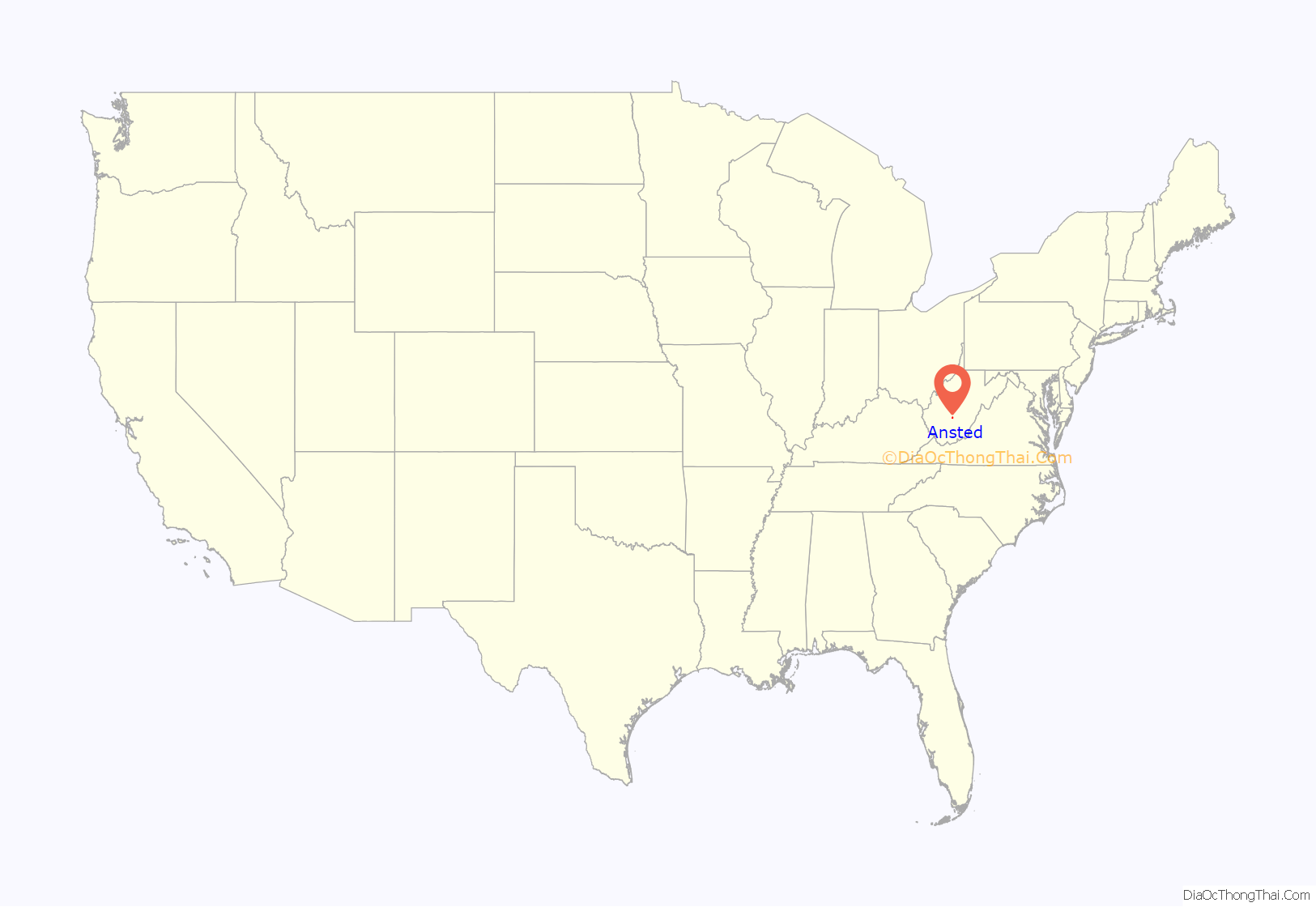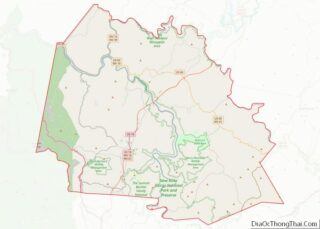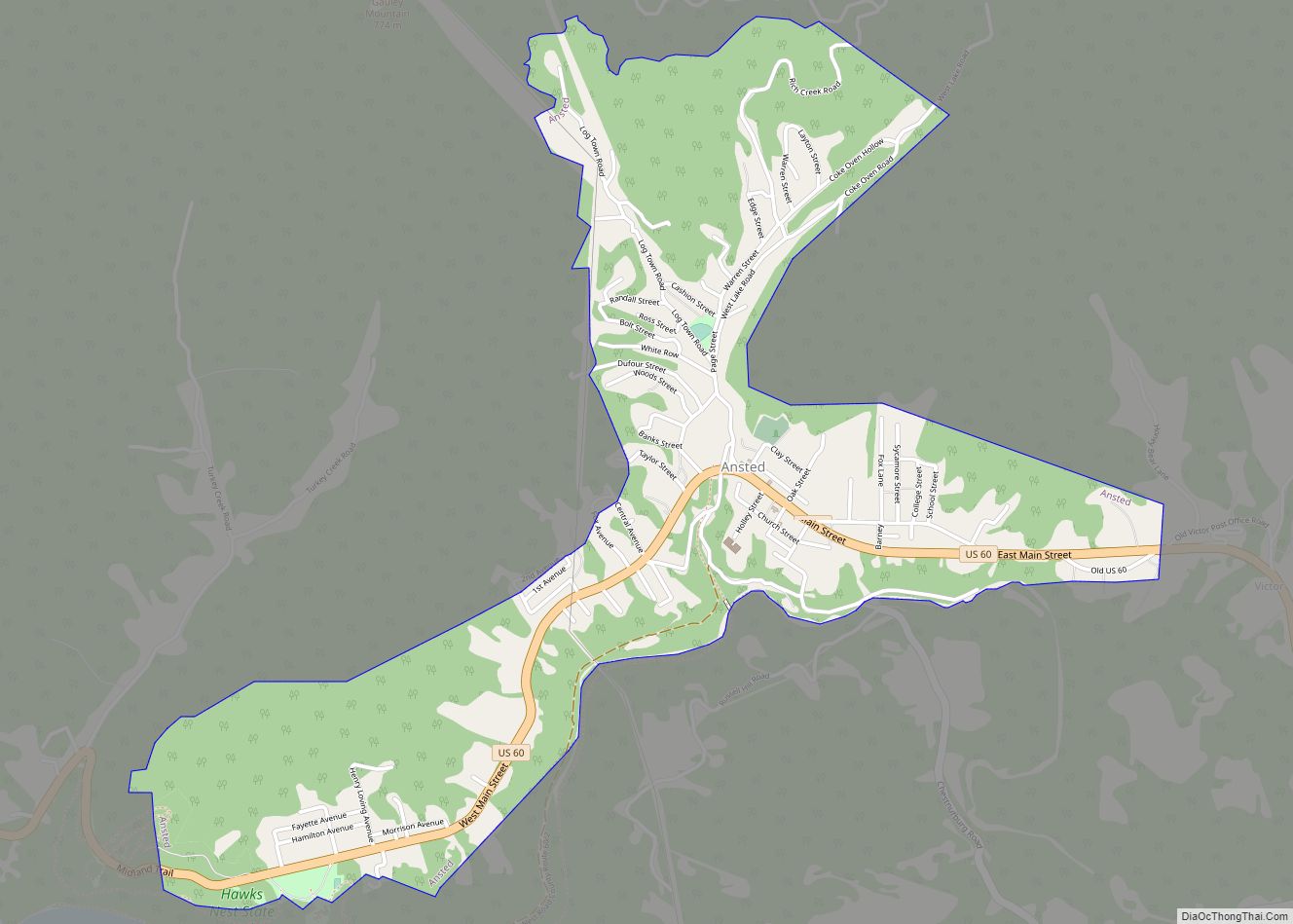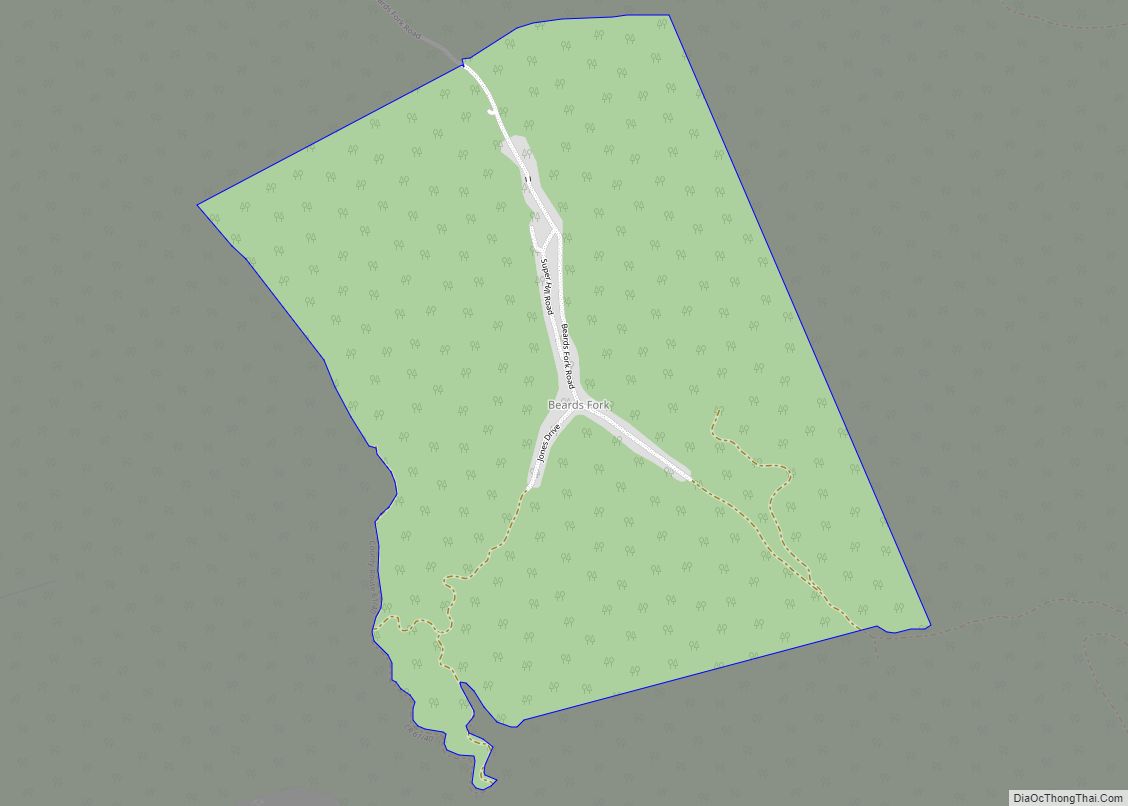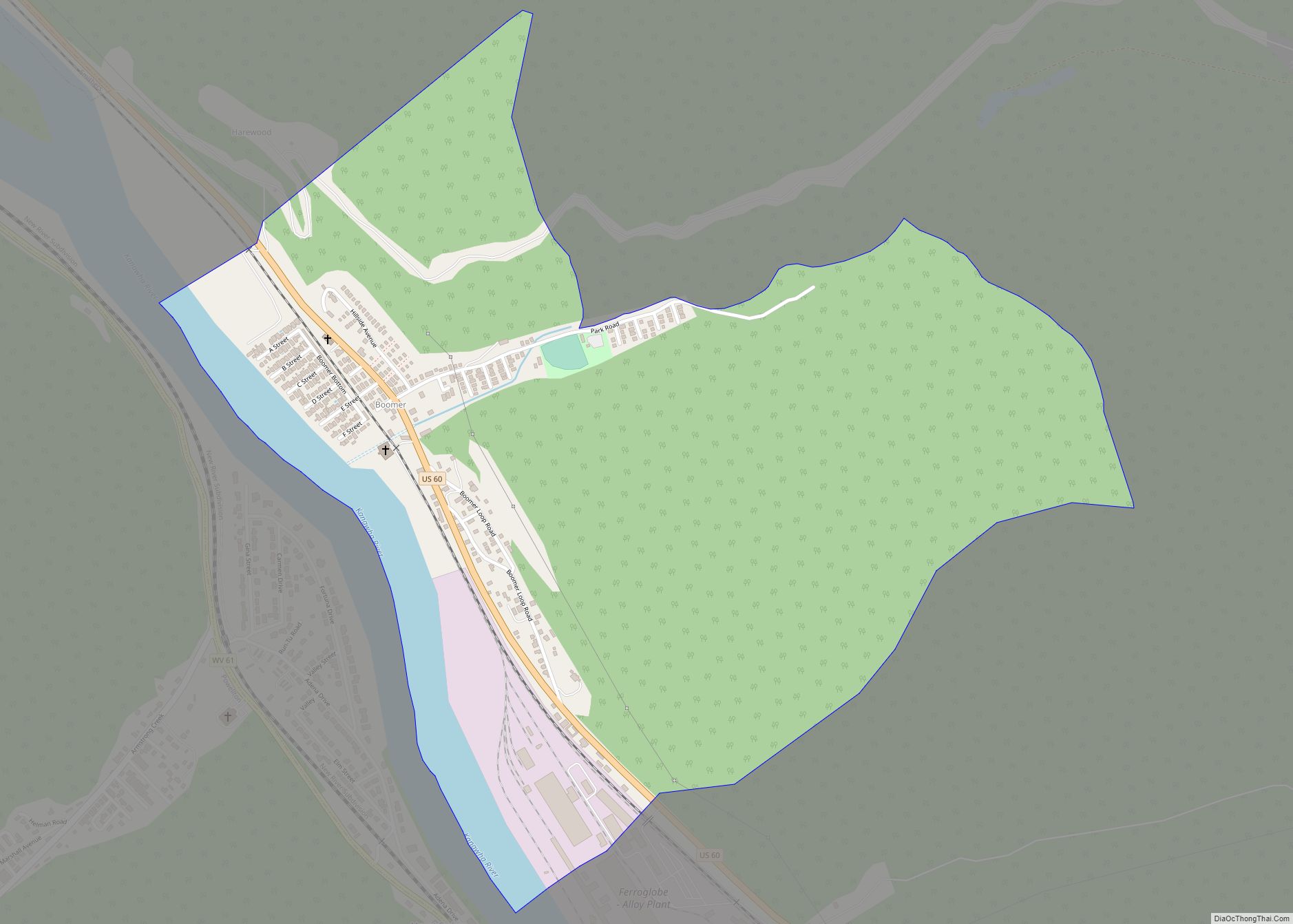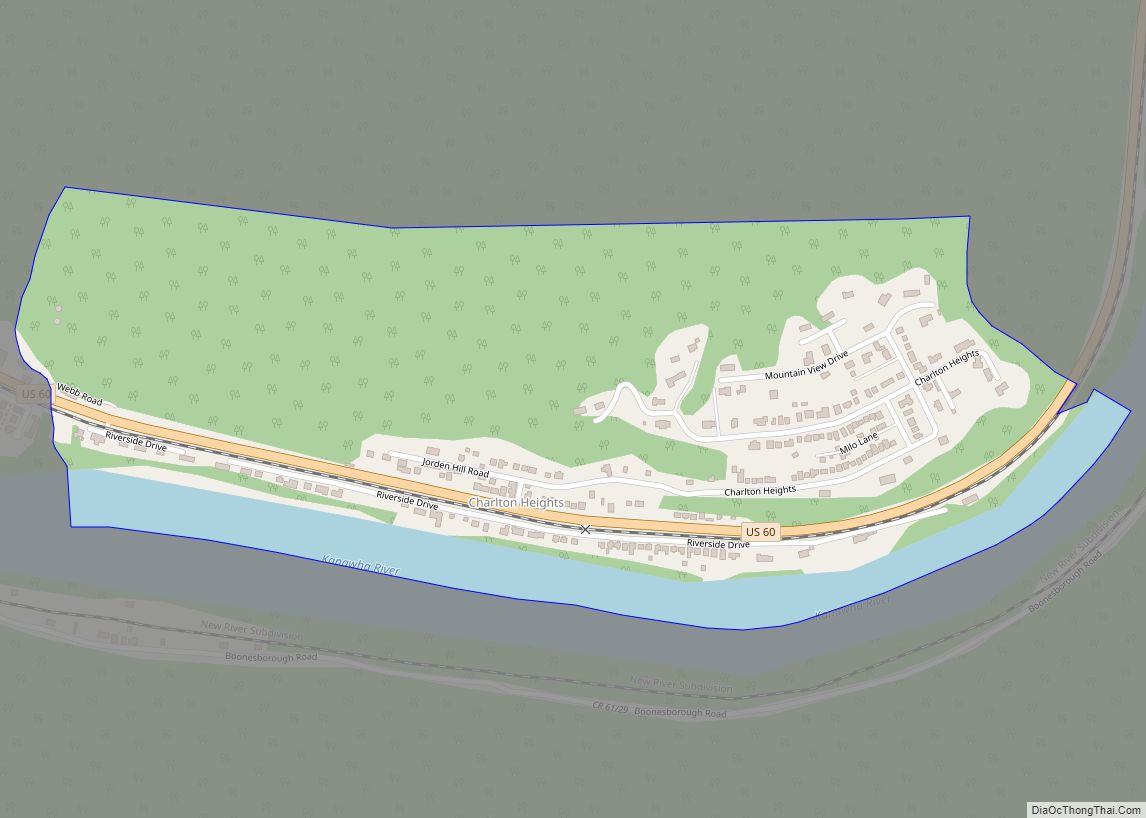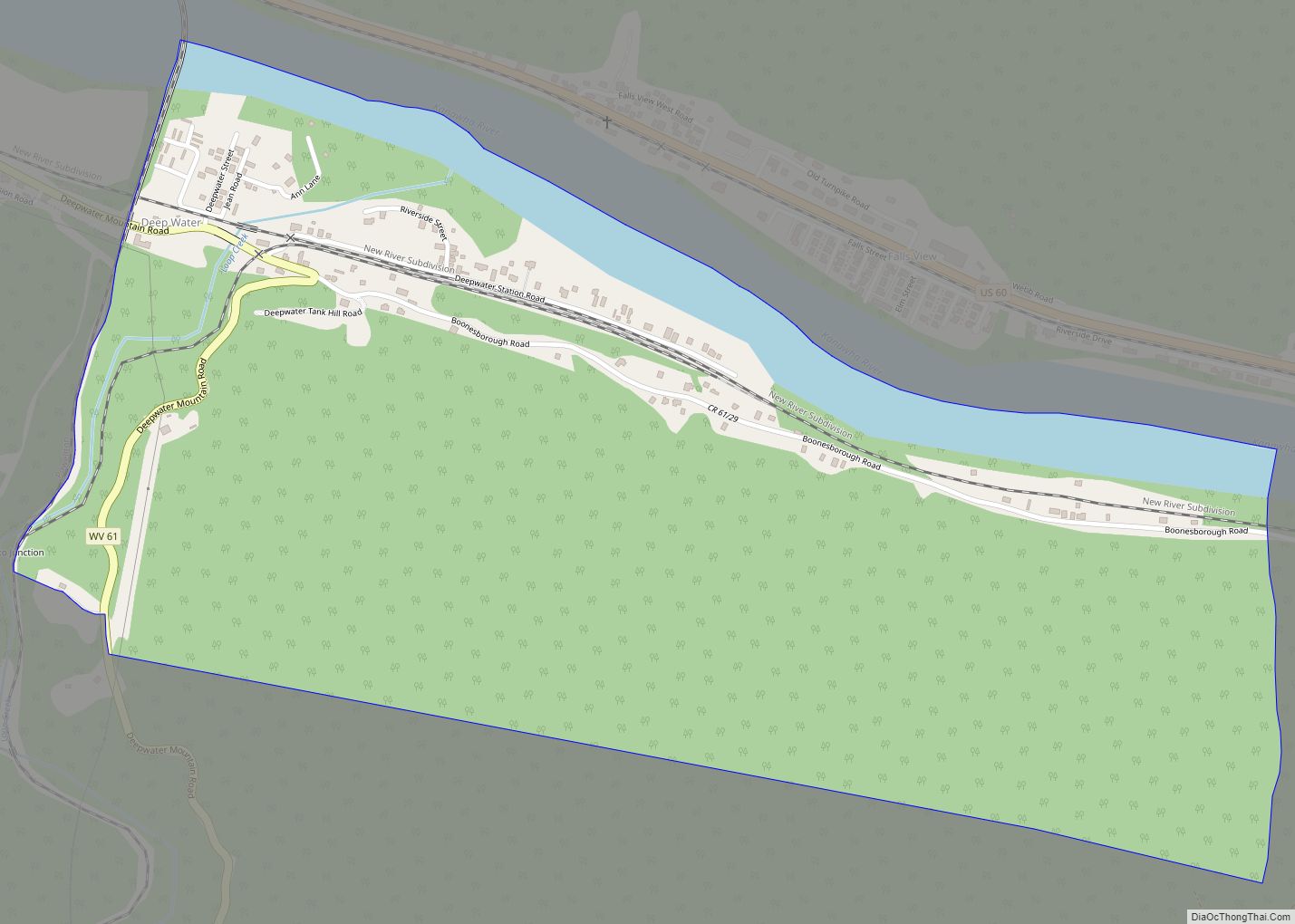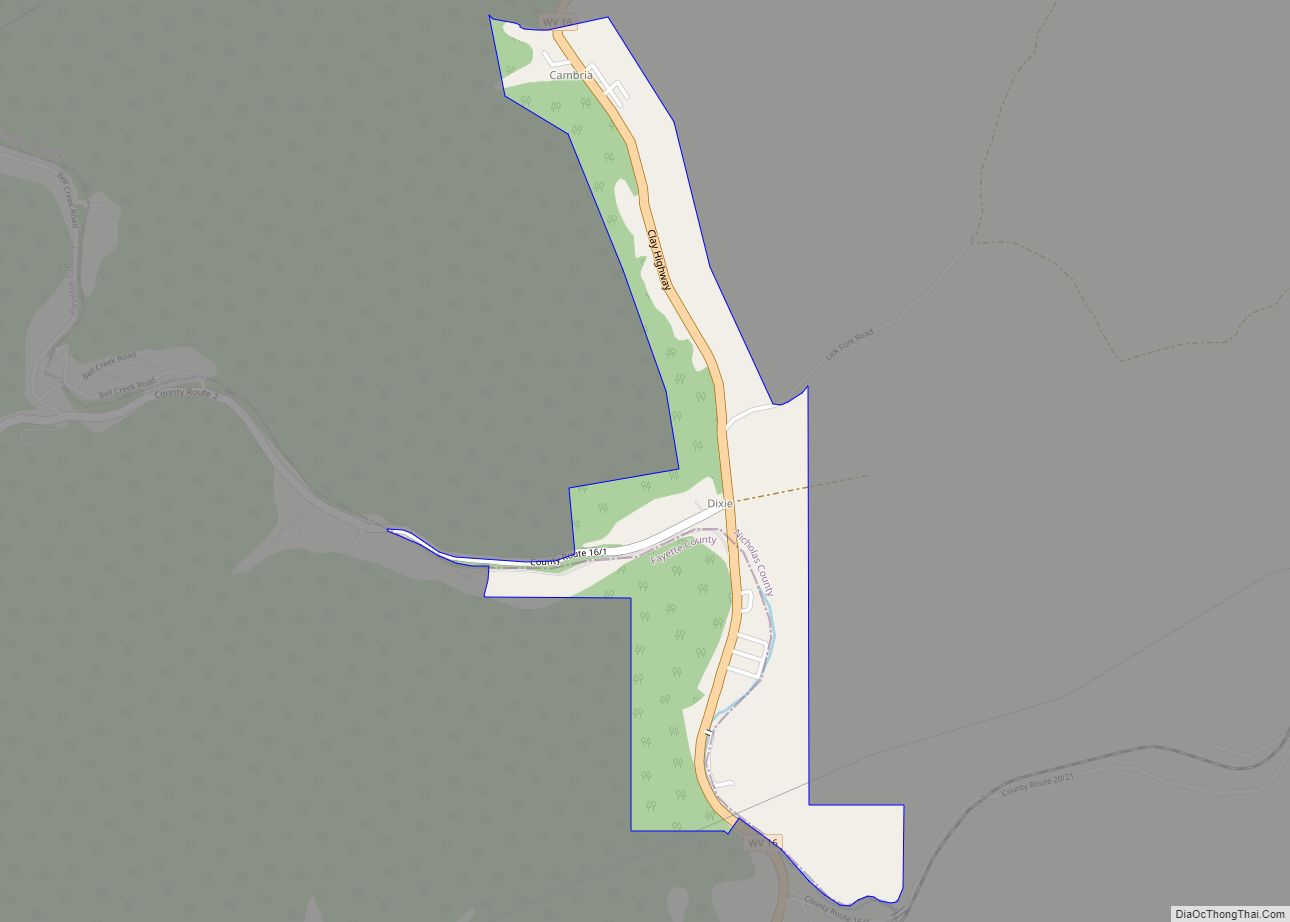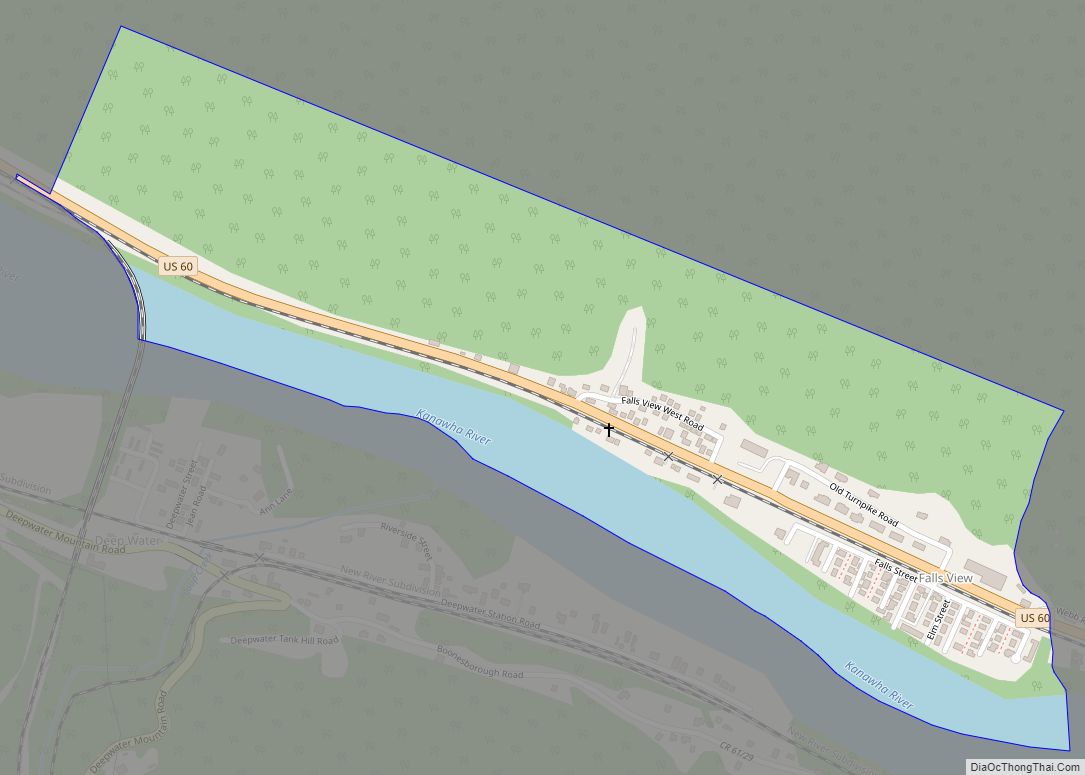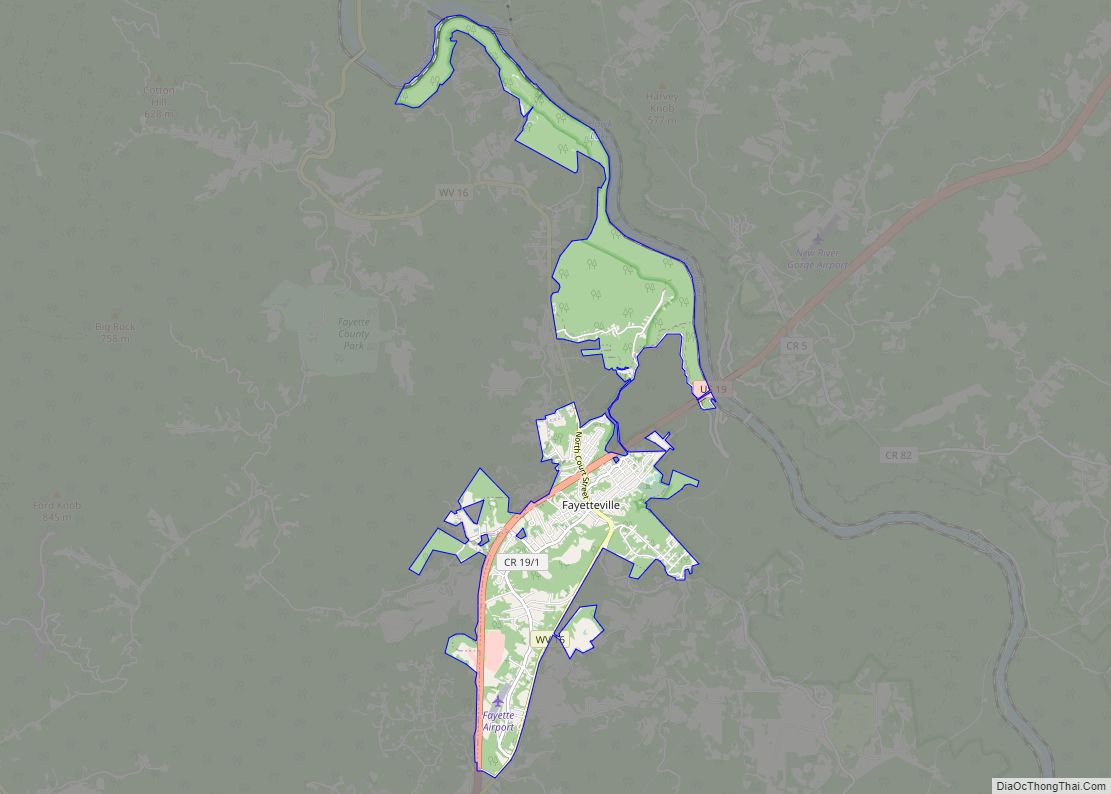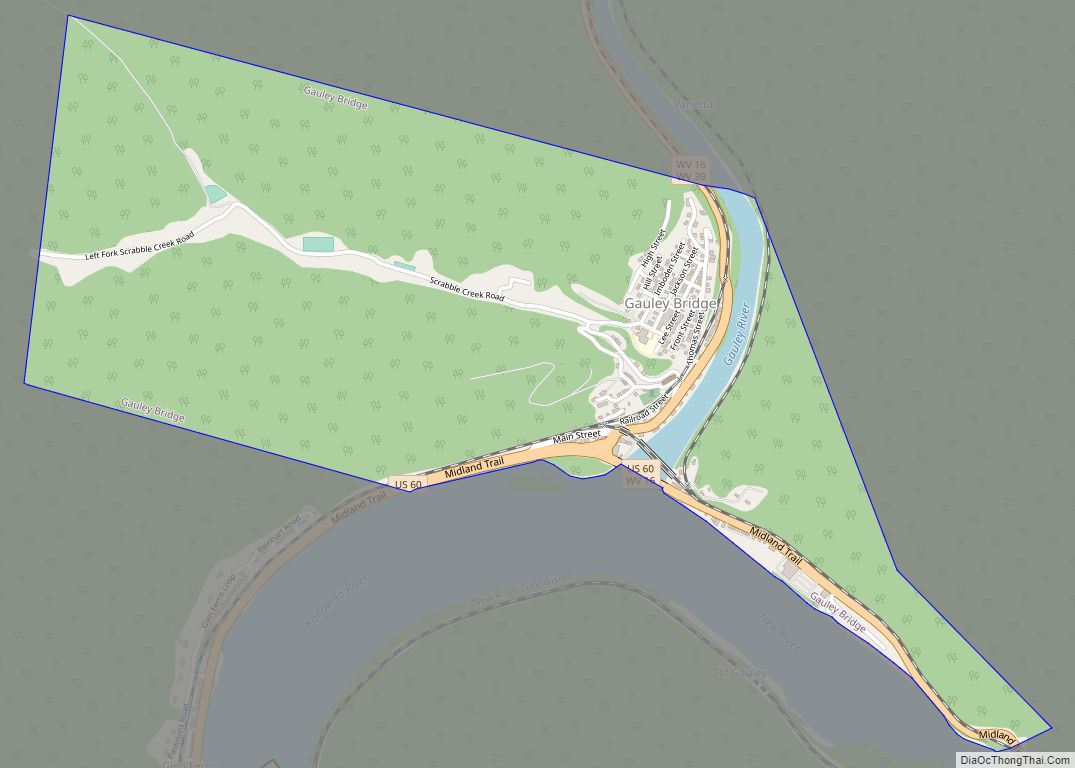Ansted is a town in Fayette County in the U.S. state of West Virginia. The population was 1,404 at the 2010 census. It is situated on high bluffs along U.S. Route 60 on a portion of the Midland Trail a National Scenic Byway near Hawks Nest overlooking the New River far below.
| Name: | Ansted town |
|---|---|
| LSAD Code: | 43 |
| LSAD Description: | town (suffix) |
| State: | West Virginia |
| County: | Fayette County |
| Elevation: | 1,319 ft (402 m) |
| Total Area: | 1.66 sq mi (4.31 km²) |
| Land Area: | 1.66 sq mi (4.30 km²) |
| Water Area: | 0.00 sq mi (0.01 km²) |
| Total Population: | 1,404 |
| Population Density: | 786.14/sq mi (303.51/km²) |
| ZIP code: | 25812 |
| Area code: | 304 |
| FIPS code: | 5401996 |
| GNISfeature ID: | 1534968 |
| Website: | www.anstedwv.com |
Online Interactive Map
Click on ![]() to view map in "full screen" mode.
to view map in "full screen" mode.
Ansted location map. Where is Ansted town?
History
Native Americans, European settlers, Fayette County
The area of what is now southern West Virginia was long a hunting ground for nomadic tribes of Native-Americans before the arrival of Europeans in the 17th century. Around 1790, the area now known as Ansted was settled by a group of Baptists who did not hold legal title to the land. These people were known as “squatters”, and built the Hopewell Baptist Church nearby. In 1792, a 400-acre (1.6 km) tract of land in the area was patented to Charles Skaggs.
Named in honor of the Marquis de la Fayette, a major hero of the American Revolutionary War, Fayette County, Virginia was created in 1831. The first county court was held that same year at Miles Manser’s general store which stood nearby Ansted’s current location along the James River and Kanawha Turnpike, an early roadway built to connect the canals on the James and Kanawha Rivers. The area was known at that time as Mountain Cove. At various times, it has also been known as Woodville, New Haven, and Westlake.
American Civil War
During the American Civil War, Fayette County became strategic for both Union and Confederate efforts. Nearby Gauley Bridge, a covered bridge carrying the James River and Kanawha Turnpike, was taken and retaken three times in 1861 and 1862; its spectacular burning was long-remembered in the community. During the winter of 1861-62, the Union Army’s Chicago Gray Dragoons (later, Companies H and I of the 12th Illinois Cavalry) made the Halfway House (Tyree Tavern) in what is now Ansted their headquarters. Confederate General Robert E. Lee maintained headquarters on nearby Sewell Mountain, where he first met “Traveler”, and later purchased what became his most famous horse. The Chicago Dragoons had a strong religious orientation and ties to Chicago’s Young Men’s Christian Association (YMCA). Many Union troops felt they were fighting the moral issue of slavery, although many Fayette County citizens had Confederate sympathies and so sent no delegate to the Wheeling Convention. Nonetheless, the area became part of the new State of West Virginia when it was formed in 1863. Local lore includes romances between the local girls and the young soldiers from Illinois. Some couples married, built homes and raised families in the Mountain State after hostilities ended.
Post-war: railroads, coal mining, Ansted laid out
Around 1872, the Chesapeake & Ohio Railway added a new line, on both sides of the narrow New River valley, creating a through route to the Ohio and Mississippi Rivers. The final spike in this portion of the C&O was placed at Hawks Nest Station, just below Ansted, on January 29, 1873.
Also in 1873, the town of Ansted was created and named after British scientist and geologist, Dr. David T. Ansted (1814–1880), who in 1853, mapped out the nearby seams of high grade bituminous coal and once owned the land under the town. Former Confederate Colonel George W. Imboden, a wealthy lawyer from Augusta County, Virginia and brother of Confederate General John D. Imboden (under whom George Imboden fought with the 18th Virginia Cavalry) laid out the town. Imboden had begun speculating in coal lands in southern West Virginia after the war’s end, and attracted British investors. Dr. Ansted, a noted geologist, had been engaged to investigate the region’s potential for coal deposits, and his report far exceeded Imboden’s best expectations. Ansted and Imboden bought more than a thousand acres (4 km) of coal and timber land on Gauley Mountain between Hawks Nest and the town of Westlake. They organized the Gauley-Kanawha Coal Company, Ltd., in 1872 and in 1873 opened a mine about 1,000 feet (300 m) above the river and 300 feet (91 m) below the summit of Gauley Mountain. The company changed its name to Hawks Nest Coal Company, Ltd., in 1875, and was reorganized in bankruptcy in 1889 as the Gauley Mountain Coal Company.
Colonel Imboden, who was Ansted’s first mayor, helped stimulate the growth of the town’s businesses. His second wife, Angie, renamed their family home “Contentment” because she and her family spent many happy hours there. Contentment had been built about 1830 on the James River and Kanawha Turnpike in the west end of what is now Ansted, and they acquired it in 1872.
Another of the town’s more well-known residents was William Nelson Page, (1854–1932). A civil engineer, protégé of Dr. Ansted, and mining manager, Page helped develop West Virginia’s rich bituminous coal fields in the late 19th and early 20th century. Page also was co-founder and builder of the Virginian Railway. In 1898, on a knoll in the middle of town, Page had a palatial mansion built by Gauley Mountain Coal Company carpenters, where he and his wife Emma Gilham Page raised their four children. Like Colonel Imboden, William Page also served as Ansted’s mayor for 10 years, although his title of “Colonel” was honorific (despite post-war involvement in the West Virginia State Militia). The railroad towns of Page and Pageton in West Virginia were named for him.
Railroad to tunnel disaster to tourism
Ansted had railroad service from 1874 until 1972. In 1874, mine owners had a narrow-gauge railroad built from Hawks Nest Station up the ravine of Mill Creek. A saddleback locomotive was used. In 1889, the Chesapeake and Ohio Railway (C&O) purchased the narrow gauge railroad and contracted with William Page to do the work to upgrade the line to standard gauge, which was completed on August 20, 1890.
The (C&O) operated the new branch line, which was known as the Hawks Nest Subdivision, from 1890 until 1972. It connected with the New River Subdivision main line at Hawks Nest Station and consisted of 3.44 miles (5.54 km) of line to and beyond the town of Ansted. The line had one of the steepest grades of any C&O branch, a 4.17% grade. C & O did not want to transport passengers on the line, but the State of West Virginia ordered it to do so as a condition of licensing. The company appealed to the United States Supreme Court, which in Chesapeake & Ohio Railway Company v. Public Service Commission of State of West Virginia, 242 U.S. 603 (1917), upheld the state’s authority. Passenger service then began and continued until some time in the 1930s. The branch line’s freight rail service ended in 1972 and the tracks were removed.
Also in the 1930s, developers of hydroelectric power for the Union Carbide plant at Alloy, West Virginia, the Kanawha and New River Power Company, decided to divert the New River through a three-mile tunnel under Hawks Nest. Many of the 3000 workers building the tunnel were asked to mine the silica they encountered for use in steel production. Never given protective equipment (although managers wore protective breathing apparatus during visits), hundreds developed silicosis some so severe that they died within a year. After Congressional hearings, the Hawks Nest Tunnel Disaster led to recognition of occupational lung disease as well as compensation legislation, as acknowledged by a historical marker on the site. It also became the subject of several books as well as historical fiction.
Today, the Ansted-Hawks Nest Rail Trail follows the route from the Town of Ansted down the steep mountainside to near Hawks Nest Station in the New River Valley. The trail is 2.2 miles (3.5 km) in length and the aerial tram from Hawks Nest Lodge links to the terminus.
Ansted Road Map
Ansted city Satellite Map
Geography
Ansted is located at 38°8′10″N 81°6′7″W / 38.13611°N 81.10194°W / 38.13611; -81.10194 (38.136029, -81.101951). According to the United States Census Bureau, the town has a total area of 1.67 square miles (4.33 km), of which 1.66 square miles (4.30 km) is land and 0.01 square miles (0.03 km) is water.
See also
Map of West Virginia State and its subdivision:- Barbour
- Berkeley
- Boone
- Braxton
- Brooke
- Cabell
- Calhoun
- Clay
- Doddridge
- Fayette
- Gilmer
- Grant
- Greenbrier
- Hampshire
- Hancock
- Hardy
- Harrison
- Jackson
- Jefferson
- Kanawha
- Lewis
- Lincoln
- Logan
- Marion
- Marshall
- Mason
- McDowell
- Mercer
- Mineral
- Mingo
- Monongalia
- Monroe
- Morgan
- Nicholas
- Ohio
- Pendleton
- Pleasants
- Pocahontas
- Preston
- Putnam
- Raleigh
- Randolph
- Ritchie
- Roane
- Summers
- Taylor
- Tucker
- Tyler
- Upshur
- Wayne
- Webster
- Wetzel
- Wirt
- Wood
- Wyoming
- Alabama
- Alaska
- Arizona
- Arkansas
- California
- Colorado
- Connecticut
- Delaware
- District of Columbia
- Florida
- Georgia
- Hawaii
- Idaho
- Illinois
- Indiana
- Iowa
- Kansas
- Kentucky
- Louisiana
- Maine
- Maryland
- Massachusetts
- Michigan
- Minnesota
- Mississippi
- Missouri
- Montana
- Nebraska
- Nevada
- New Hampshire
- New Jersey
- New Mexico
- New York
- North Carolina
- North Dakota
- Ohio
- Oklahoma
- Oregon
- Pennsylvania
- Rhode Island
- South Carolina
- South Dakota
- Tennessee
- Texas
- Utah
- Vermont
- Virginia
- Washington
- West Virginia
- Wisconsin
- Wyoming
